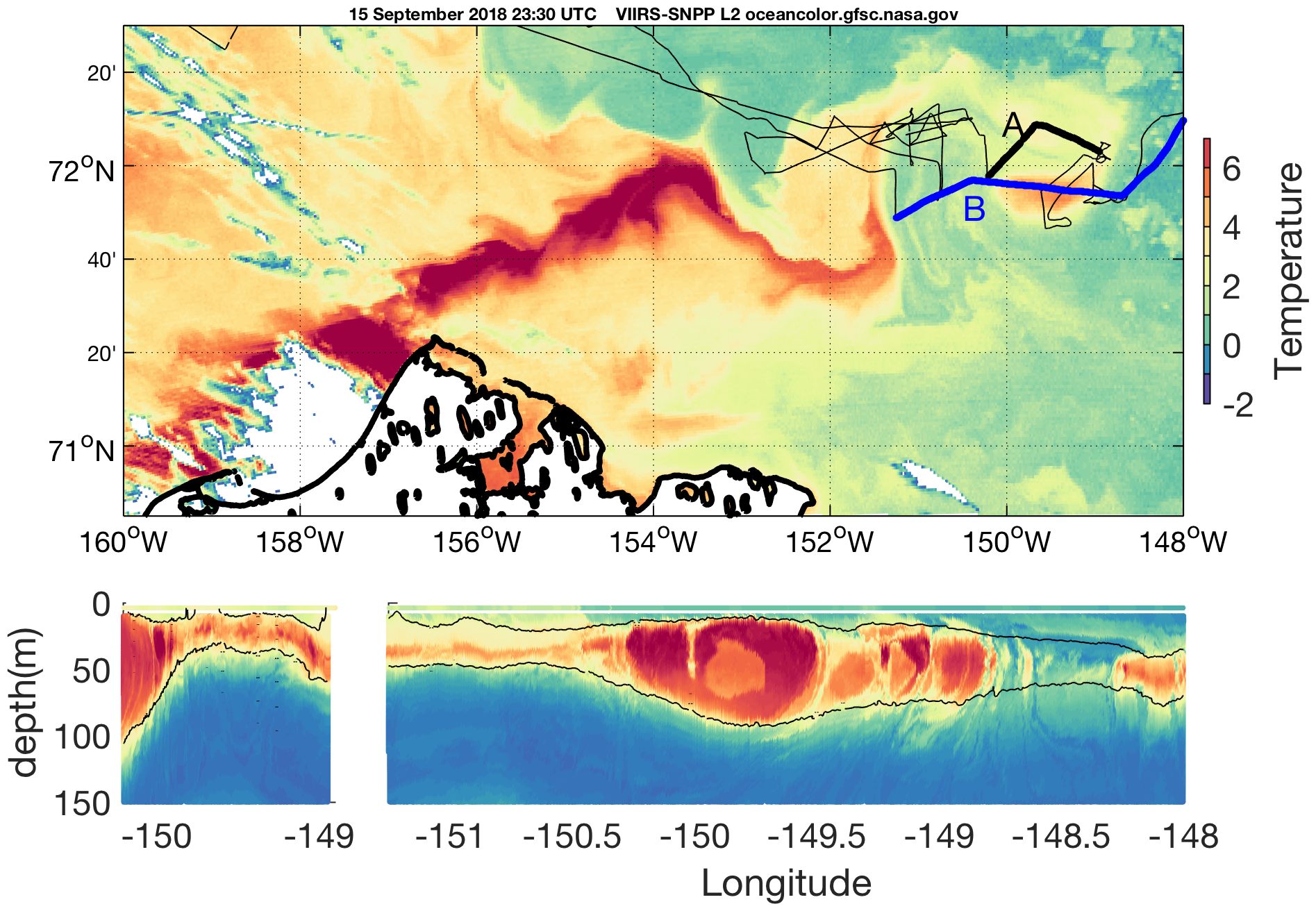Study brings sharper focus to warm Arctic seawater
April 28, 2021
Alice Bailey
907-474-5350

A new study provides the first high-resolution observations of warm, northbound water sliding beneath the surface of the cold Beaufort Sea.
The research, published in Nature Communications, adds to evidence that polar ice may be melting faster than models predict.
“The rate of accelerating sea ice melt in the Arctic has been hard to predict accurately, in part because of all of the complex local feedbacks between ice, ocean and atmosphere; this work showcases the large role in warming that ocean water plays as part of those feedbacks,” said Jennifer MacKinnon, a physical oceanographer at the University of California San Diego’s Scripps Institute of Oceanography and lead author of the paper.
Scientists from the University of Alaska Fairbanks and other institutions used the research vessel Sikuliaq, satellite imagery and an arsenal of scientific equipment to measure smaller-scale physical processes not represented by regional and global ice and climate forecasts.
“We have visualized the injection of Pacific-origin warm water into the Beaufort Sea in unprecedented detail,” said co-author Harper Simmons, a professor of physical oceanography at UAF’s College of Fisheries and Ocean Sciences.
Warm, salty water flows north through the Bering Strait. The process by which it dives beneath the fresher water on the surface of the Arctic known as subduction.
Satellite thermal imagery of the Beaufort Sea collected during the 2018 cruise shows a warm plume of water entering the Beaufort Sea. Other instruments show that the main core of warm water is actually subsurface, where it is invisible to the satellite.
The paper also provides high-resolution observations of small eddies that swirl around and melt ice from beneath. These pockets of warm circulating water can stay under the surface for months to years.
“Turbulence is one of the ways that heat gets extracted out of the ocean and warms the base of the ice pack,” said Simmons.
Much of the research was funded by the Office of Naval Research as part of the Stratified Ocean Dynamics of the Arctic project, which seeks to better understand the changing Arctic Ocean.
CFOS associate professor Seth Danielson and graduate student Thilo Klenz also co-authored the paper.
ADDITIONAL CONTACT: Harper Simmons, 907-474-5729, hlsimmons@alaska.edu


